Abstract
Submitochondrial particles from mung bean mitochondria (Phaseolus aureus) are able to catalyze an energy-linked reduced nicotinamide adenine dinucleotide-nicotinamide adenine dinucleotide phosphate transhydrogenase reaction supported by ATP or by aerobically generated high energy intermediates. The energy transfer pathway appears to differ from that utilized for oxidative phosphorylation.
Mung bean submitochondrial particles will also reduce nicotinamide adenine dinucleotide by reversed electron transport from succinate or ascorbate tetramethyl-p-phenylenediamine. The energy requirement can be met by ATP or by aerobically generated high energy intermediates.
A scheme for the energy transduction pathway in mung beans is postulated from the effects of inhibitors and uncouplers of energy transfer on transhydrogenase and reversed electron transfer reactions.
Full text
PDF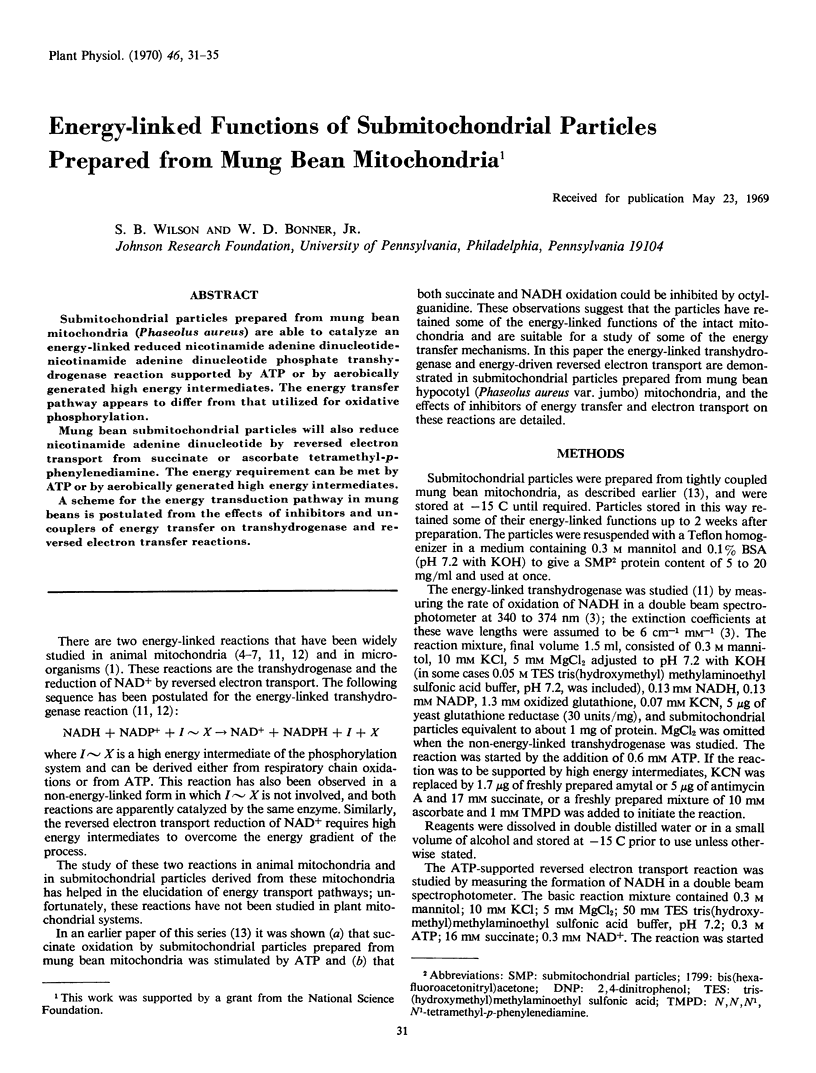
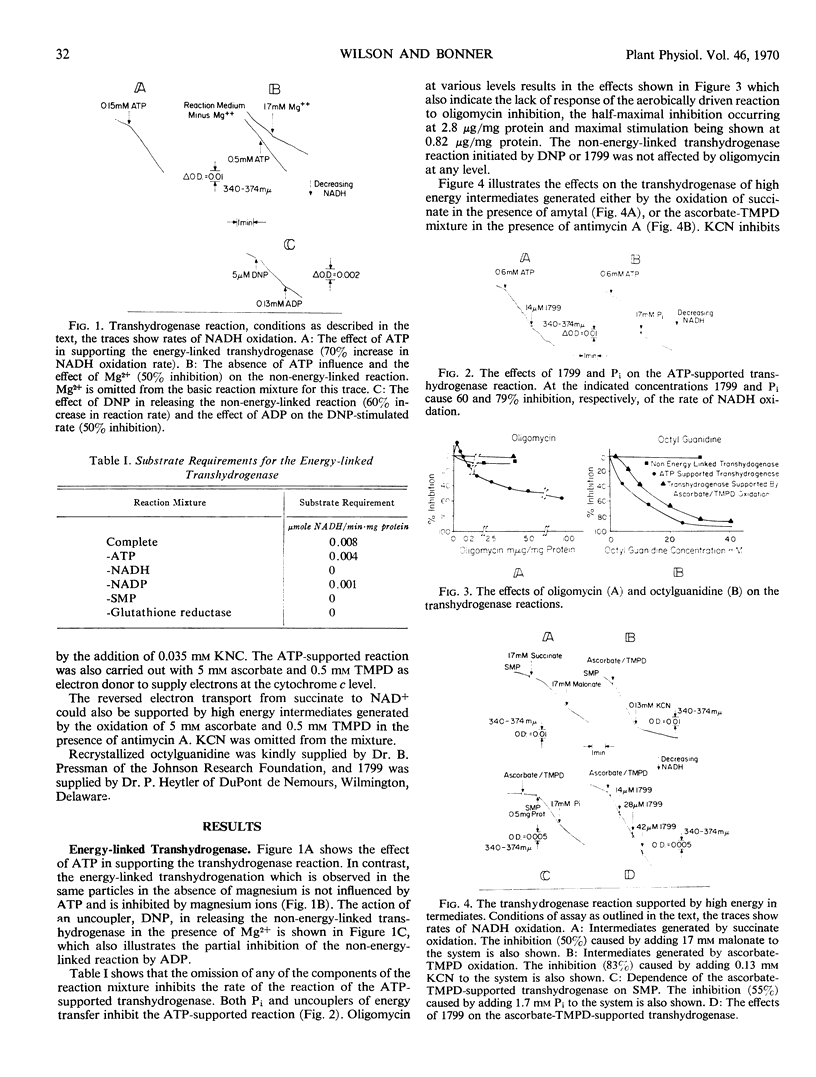
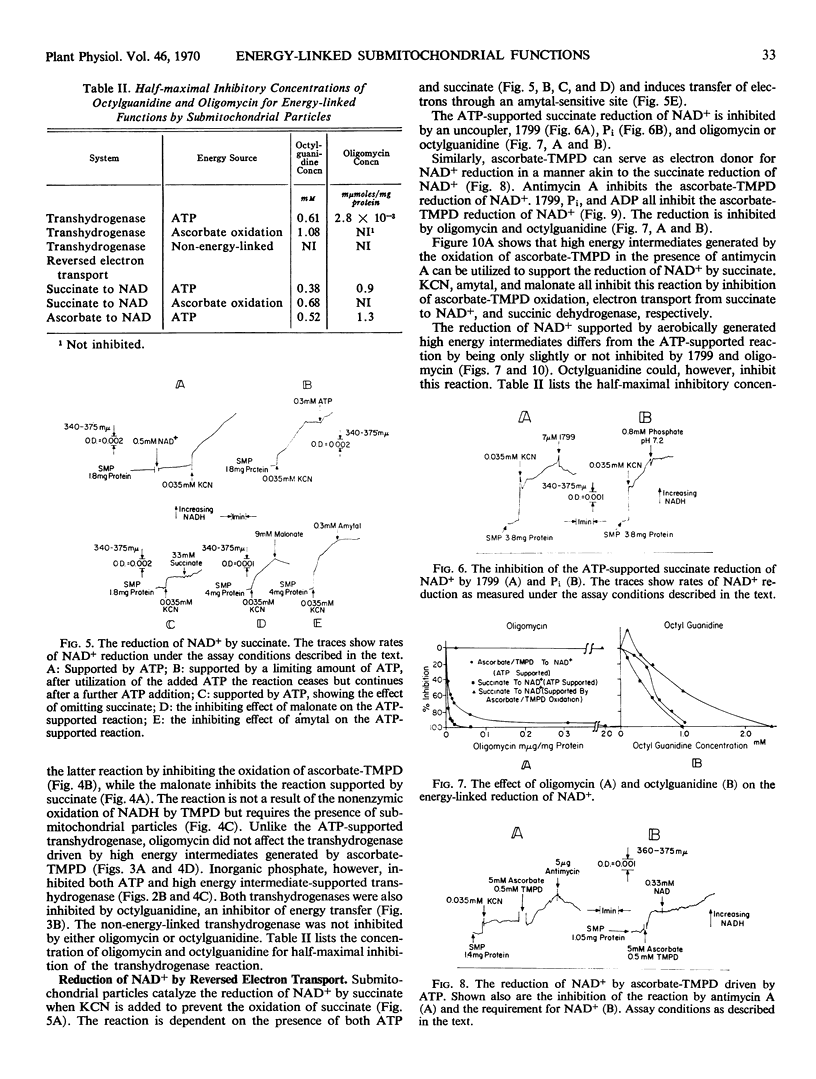
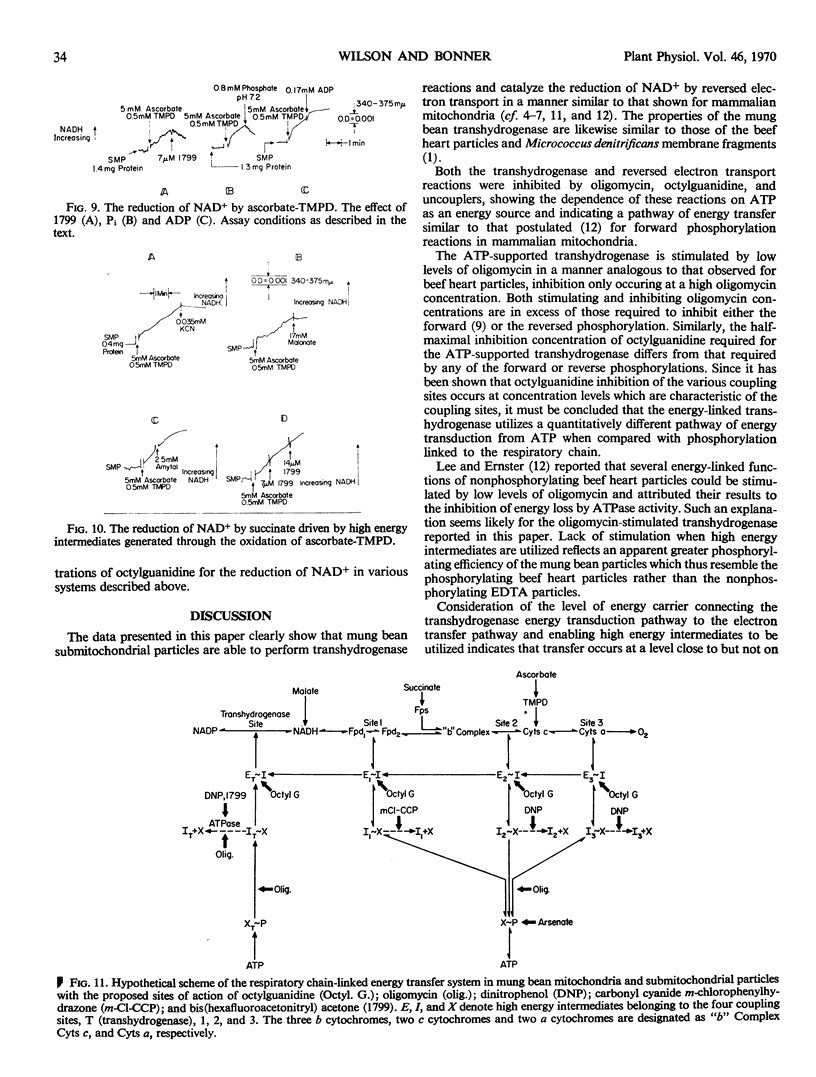
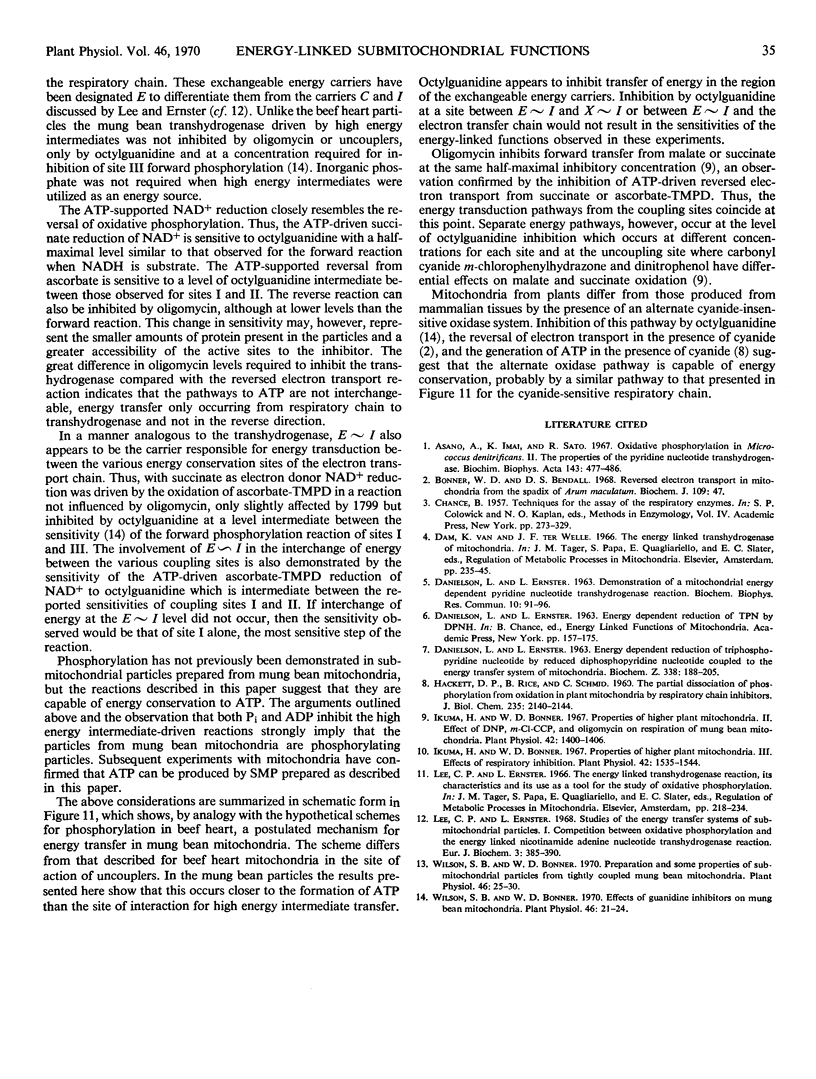
Selected References
These references are in PubMed. This may not be the complete list of references from this article.
- Asano A., Imai K., Sato R. Oxidative phosphorylation in Micrococcus dentrificans. II. The properties of pyridine nucleotide transhydrogenase. Biochim Biophys Acta. 1967;143(3):477–486. doi: 10.1016/0005-2728(67)90053-9. [DOI] [PubMed] [Google Scholar]
- DANIELSON L., ERNSTER L. Demonstration of a mitochondrial energy-dependent pyridine nucleotide transhydrogenase reaction. Biochem Biophys Res Commun. 1963 Jan 18;10:91–96. doi: 10.1016/0006-291x(63)90274-2. [DOI] [PubMed] [Google Scholar]
- DANIELSON L., ERNSTER L. ENERGY-DEPENDENT REDUCTION OF TRIPHOSPHOPYRIDINE NUCLEOTIDE BY REDUCED DIPHOSPHOPYRIDINE NUCLEOTIDE, COUPLED TO THE ENERGY-TRANSFER SYTEM OF THE RESPIRATORY CHAIN. Biochem Z. 1963;338:188–205. [PubMed] [Google Scholar]
- HACKETT D. P., RICE B., SCHMID C. The partial dissociation of phosphorylation from oxidation in plant mitochondria by respiratory chain inhibitors. J Biol Chem. 1960 Jul;235:2140–2144. [PubMed] [Google Scholar]
- Ikuma H., Bonner W. D. Properties of Higher Plant Mitochondria. II. Effects of DNP, m-Cl-CCP, and Oligomycin on Respiration of Mung Bean Mitochondria. Plant Physiol. 1967 Oct;42(10):1400–1406. doi: 10.1104/pp.42.10.1400. [DOI] [PMC free article] [PubMed] [Google Scholar]
- Ikuma H., Bonner W. D. Properties of Higher Plant Mitochondria. III. Effects of Respiratory Inhibitors. Plant Physiol. 1967 Nov;42(11):1535–1544. doi: 10.1104/pp.42.11.1535. [DOI] [PMC free article] [PubMed] [Google Scholar]
- Lee C., Ernster L. Studies of the energy-transfer system of submitochondrial particles. I. Competition between oxidative phosphorylation and the energy-linked nicotinamide-adenine dinucleotide transhydrogenase reaction. Eur J Biochem. 1968 Feb;3(4):385–390. doi: 10.1111/j.1432-1033.1967.tb19541.x. [DOI] [PubMed] [Google Scholar]
- Wilson S. B., Bonner W. D. Effects of guanidine inhibitors on mung bean mitochondria. Plant Physiol. 1970 Jul;46(1):21–24. doi: 10.1104/pp.46.1.21. [DOI] [PMC free article] [PubMed] [Google Scholar]
- Wilson S. B., Bonner W. D. Preparation and some properties of submitochondrial particles from tightly coupled mung bean mitochondria. Plant Physiol. 1970 Jul;46(1):25–30. doi: 10.1104/pp.46.1.25. [DOI] [PMC free article] [PubMed] [Google Scholar]


